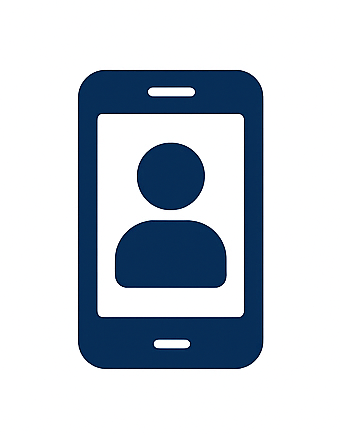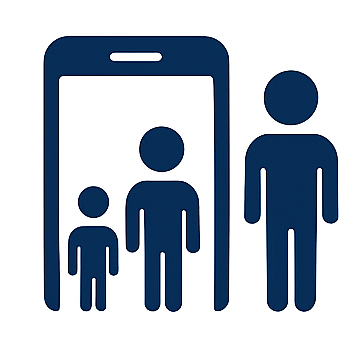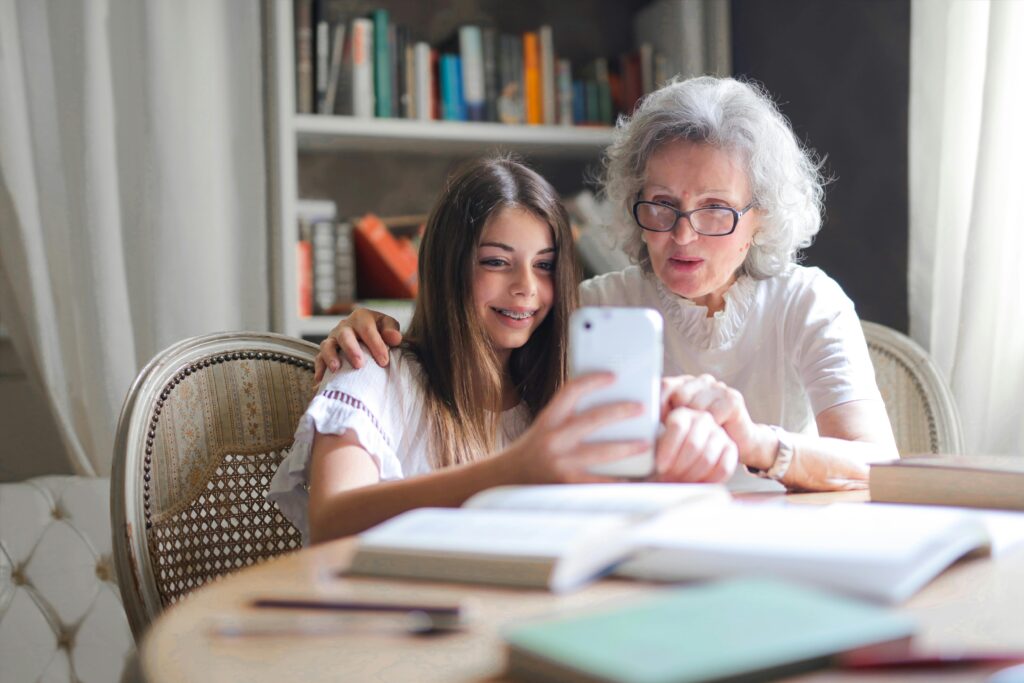Independence for them, peace of mind for you
Sayph is a smartphone for children and teens that parents can monitor and control from a simple web app. Safer by design — so your child can go and explore the world, not the internet.
For families with children under 16.

Peace of mind
A phone designed for children – and parents
Parents today face a dilemma: children want a phone to fit in and stay safe, but regular smartphones aren’t safe for children.
Sayph is the solution. A real Android smartphone that looks and feels like the phones their friends have, but you control everything—apps, contacts, screen time, and content.
You’re in complete control
No unsafe apps. You decide who they can contact, and set times when the phone works.
Know how it’s being used, without the admin
AI reports summarise how your child uses their phone—no surprises.
Grows with your child
Start basic, with messages, calls, camera, and location tracking. Gradually unlock features as they mature – and when you feel they’re ready.
Why you should choose a Sayph phone for your child
The smartphone dilemma ends here.
Giving your child a phone feels like choosing between safety and freedom. You want them to walk to school, meet friends, and feel included — without opening the door to grooming, adult content, sexting, toxic trends and endless scrolling.
Handing down an old smartphone with basic parental controls might feel like a safe option, but most parents discover this isn’t enough: children find the workarounds. It’s not their fault — today’s addictive tech is not designed for young people’s still-developing brains.
Sayph is different. We start with childhood first, then add only what’s needed for independence and safety.
- Protect against grooming and unknown contacts
- Limit screen time and reduce phone addiction
- Prevent exposure to adult content
- Keep toxic social feeds out of childhood
- Check their location in real time
- Reach them when it matters
Built for safety
The Sayph phone puts parents in control
Sayph OS is managed in the ‘Sayph Space’ parental controls app. You decide what’s on the phone — and what isn’t.

Parent-approved contacts only
Only numbers you approve or set up can call or message this phone. No calls from unknown users.

No social media. No app store.
Nothing risky or addictive, by default. We believe addictive apps should have no place in childhood, but this shouldn’t make your child stand out.

Safer photos & messages
Select which contacts you are happy for your child to exchange photo messages with – if unsure, these are blocked by default.

Location tracking
See where they are in real time, to maintain your piece of mind.

Tough to crack
With no app store, no default browser and parent-only installs, Sayph is much harder to circumvent than a standard smartphone with parental controls.

Grows with your child
Start simple. Add tools later on your terms — when they’re ready, not when Big Tech says they are.
Sayph phones by design
Other options either block almost everything (but aren’t practical), or allow almost anything (and are easy to bypass). Sayph takes a third path: restricted first, with careful room to grow.
| Feature | Sayph | iPhone or Android with parental controls app | Dumb phone |
|---|---|---|---|
| No social media by default | ✅Yes | ❌No | ✅Yes |
| Parent-only app installs | Coming 2026Yes | ❌No | N/AN/A |
| Safe browsing, parent alerts | Coming 2026Yes | PPossible, but difficult to monitor | N/A |
| Safe photos & messages (enabled per contact) | ✅Yes | ❌No | N/AN/A |
| Parent-approved contacts only | ✅Yes | ❌ / possible with some set-upsPartial | No |
| Difficulty to circumvent parental controls | Very high | Low / varies | N/A |
Note: set-ups vary. Table shows the typical experience for each option.

Built for childhood, not for scrolling.
At Sayph, we believe childhood should be about outdoor exploration, real-world friendships, communication and play – not endless scrolling.
Sayph gives your child the freedom to grow, explore and stay connected — without the distractions, apps or algorithms that steal their attention.
5 steps: Safer phones for kids & young people
Open your parent/carer account on the Sayph Space portal
£5.99/month
Buy a SIM/call plan from any network provider
From £2-3/month
Set up the phone with your approved contacts
Relax, knowing you’ve given your child a phone without unleashing social media and the internet
FAQs
What ages is Sayph for?
8 to 16.
We agree with www.smartphonefreechildhood.com that, in an ideal world, we wouldn’t need to give our children phones. However, as parents, we also know that phones can be a really useful way to give children independence as they get older, and to allow them to remain in contact with a parent or carer who can also see where they are at any point.
We’re designing phones that will grow with children, while giving parents’ peace of mind.
Can my child bypass the controls?
No. Unlike some options (like a standard smartphone with parental controls), we have reconfigured the phone’s operating system to be naturally safe and restrictive. Only by adding third party apps would the phone become less safe, so we will carefully screen apps before making them available for parents and carers to download.
Is WhatsApp or social media available?
No. We’ve heard too many stories about what happens when children are allowed to roam free on social media, and honestly, we don’t believe the big tech firms can be trusted to safeguard our children. The tech firms have themselves chosen 13 as the age when they want children to start using their products. We believe if governments were serious about prioritising children’s mental health and wellbeing, they would ban social media use before 16.
Can I add a browser later?
We are working on a Sayph browser that will allow safer internet browsing, with filtering & monitoring available via the Sayph Space parent portal.
How do photos and MMS work?
Our beta version does not yet allow photos to be sent or received via MMS. This is to eliminate the risk of children and young people either being sent images they don’t want to see, or pressured into sending something they shouldn’t.
We are working to develop a system that allows safe and effective monitoring of MMS images, so we can enable safe photo sharing.
How much does it cost?
We want the Sayph phone to be affordable and accessible to as many parents as possible, so will sell our phone as close to the market price of the basic model (without our software and OS) as possible. We aim to launch the phone at around £179.
Monthly subscription under £10 / month.
You will just then need a SIM & call plan (available from £2-3 / month)

The phone they want. The reassurance you need.
Join families who want their children to enjoy childhood — in real life — and still be reachable when it matters.
“Overprotection in the real world and underprotection in the virtual world—are the major reasons why children born after 1995 became the anxious generation”
Jonathan Haidt,
The Anxious Generation: How the Great Rewiring of Childhood is Causing an Epidemic of Mental Illness